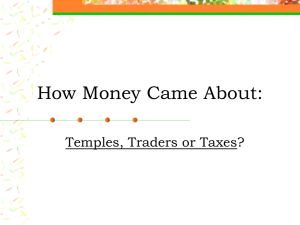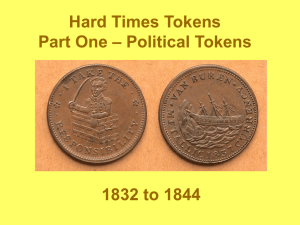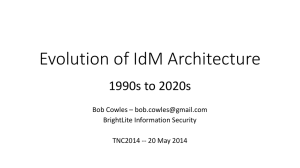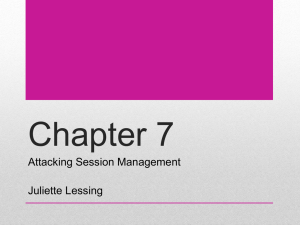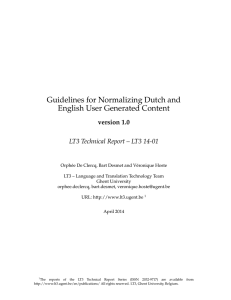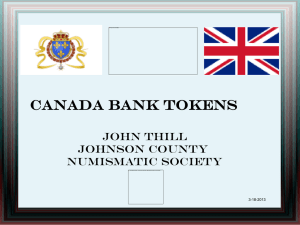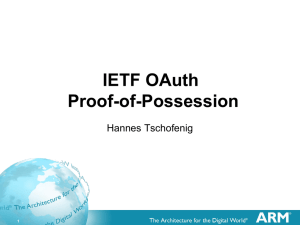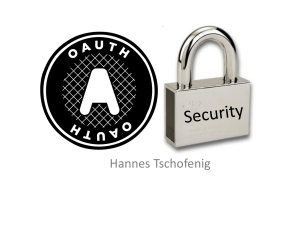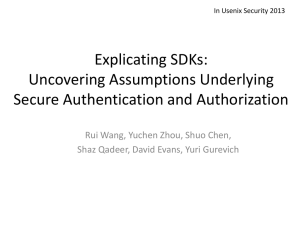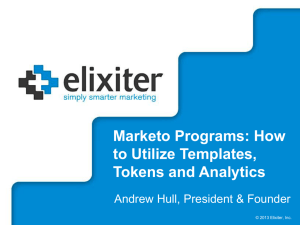Hard Times Tokens - Augusta Coin Club
advertisement
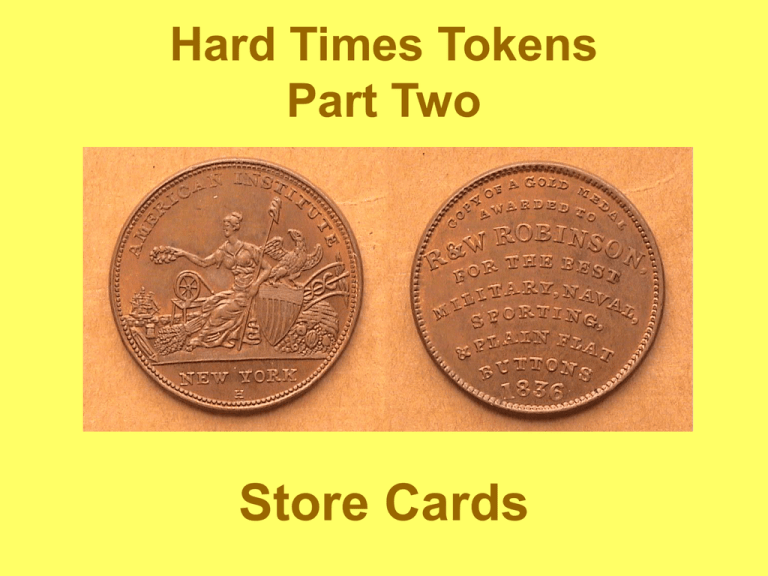
Hard Times Tokens Part Two Store Cards The concept of store card tokens goes back to the 1790’s in England when British Trade tokens (aka Conder tokens) were used there. In the United States, store cards were being issued on large cent-size copper tokens before the Era of Hard Times. Russell Rulau, the modern authority on US trade tokens includes those tokens struck from 1829 through 1844 as part of the Hard Times Series. During 1837 as the Recession deepened, many shop owners accepted store cards for 1¢ towards the purchase of their product even if they weren’t the advertiser; this despite the token’s probable cost to the proprietor of sixty to eighty cents on a dollar’s worth of tokens.. The two foremost authorities on the series were Lyman H. Low and Russell Rulau. Seen at right is the 4th edition of Russell Rulau’s “Hard Times Tokens” based on Lyman Low’s original 1899 publication. This was the last edition to use both the Low (L-#) and Rulau’s (HT-#) numbering system. Hard Times Tokens Rarity Scale R-1 = common R-2 = less common R-3 = Scarce R-4 = Est. 76 to 200 pieces survive R-5 = est. 31 – 75 pieces survive R-6 = est. 13 to 30 pieces survive R-7 = est. 4 to 12 pieces survive R-8 = est. 2 to 3 pieces exist R-9 = Unique (Only one known) Store Cards were issued in a number of states; the majority of them from Massachusetts, New York and Pennsylvania. The Georgia tokens are rare! This one issued by I. Gilbert of Augusta, GA (28½mm) dates from 1829-1833. HT-110, R7, (four to twelve known), What makes the store cards portion of the Hard Times Tokens series so interesting are the almost limitless design types and varieties. Some tokens portrayed famous persons such as the Marquis de Lafayette who had died in 1834. Others drew upon the contemporary coinage designs’ likenesses to the Coronet Liberty Head, Liberty Seated and Spread Eagle. Many more displayed an image of their product or service while some--with less imagination perhaps--merely asked the engraver to inscribe words on both sides of the token as to what they were offering. Massachusetts Store Cards Lafayette, a friend to America & Freedom H M & E Richards, Attleboro, MA used Lafayette on the obverse to call attention to his manufacturing of jewelry . HT-150, Low-83, R2 Robinson’s Jones & Co. Button Makers American Institute medal award – 1833 Attleboro, Mass. Edward Hulseman engraved this and many other outstanding political Hard Times Tokens; HT-154, Low-76 -1833 R1 Reorganized in 1836 as R & W. Robinson, they had Hulseman strike this token. An 1836 Hard Times Store Card, HT-155, Low-104, R1 in Red Uncirculated condition. (Rare in this grade). Notice the curved lettering on the reverse. S.B. SCHENCK, Attleboro, mass. A planing machine advertised in 1834, HT-157, Low-80, R1 Wm H. Milton of Boston, MA operated a clothier’s warehouse in Fanueil Hall which he referred to on his tokens. as an “extensive assortment of fashionable ready made clothing.” This inscription only token is a nice Red/Brown unc piece. It was struck sometime between 1830 and 1834 and is cataloged as HT-163, Low-265, R1 Wm. H. Milton & Co. – Boston, Mass. “Warehouse” on rev. is larger than preceding. This later token dates from 1833 thru 1844. The lettering on the obverse is curved.; HT-165, Low-267 R2 Alfred Willard was a wholesaler and retailer of combs and brushes and perfumes located at 149 Washington Street in downtown Boston An Ornate Comb HT-171, Low 328, R1 (1835) Francis L. Brigham was a wholesale and retail dealer in Dry goods in New Bedford, MA. The “Cheapside” Building took up a section of Pleasant Street called Market Square and was popular with shoppers. 1833 HT-176, L-73 R3 Around 1835, John J. Adams of Taunton, MA was offering “Cash for Bristles” in order to make his brushes. He also had an office in Boston. Known as the Ugly Boar, the inscribed offer, “Cash for Bristles” on the obv. was the first to wear off on this popular token, HT-181, L-300, R1. New Jersey Tokens There were a number of Hard Times tokens issued by New Jersey manufacturers between 1833 and 1841. Most are scarce to rare and were either the standard size; struck in copper (i.e., around 28mm), or closer to the size of a half cent, (about 21mm to 23 mm). The three main areas were Lakewood and Howell near the central Jersey shore and Belleville, located only a few miles southwest of New York City. Obverse motifs include a bunch of grapes, a rose, a ship, a berry plant, an eagle and a cow. The simple Rose Token (1835) This token may have been used at the Howell Works Garden store. HT-201, Low-163, R3, this specimen has all five letters of Token showing, not seen on the Rulau plate coin. The 1834 Howell Works Grapes Token. The smaller grapes token was struck in 1834. Signum is Latin for “Sign” and implies, perhaps meaning “a sign of good faith”, so the token may have had value for the purchase of fruit at the Howell Works store; HT-200, Low-81, R4 The Howell Works, (aka Monmouth Furnace) made marine engines and was owned by James P. Allaire where a NJ state park now stands. The obverses of the two Howell Works Garden tokens side by side. The Allaire State Park in Monmouth County, NJ contains replicas of the Howell works buildings and offers a locomotive passenger ride to visitors. The reverses of the Rose and Grapes Howell Works Garden tokens side by side. The Bergen Iron Works Tokens This 1840 21 mm token, HT-205, Low-142, R2 was struck in brass and used by employees at the Bergen Iron Works store. The area is the now the incorporated town of Lakewood, NJ. Bergen Iron Works Store token with stars This 1840 Bergen Iron Works store token was also 21 mm but struck in copper. It is distinguished by stars under the legend. HT-205, Low-180, R4 Bergen Iron Works with circles This 1840 Bergen Iron Works Store token is distinguished by tiny circles in place of stars.; HT-206, Low-143, R4 Around 1837, Tobias D. Seaman operated a butcher shop and hotel in Bellville, NJ The first of two store cards was crude and struck with errors. Besides mangling the dies, the engraver misspelled the proprietor’s name T DUSEMAN instead of T D SEAMAN. HT-204, Low-148, R1, Quite rare XF or better. T. D. Seaman; the Butcher of Belleville The scarce NJ cow token “A Friend to the Constitution”, HT-204-B, Low-155, R5 The Store Cards of New York State The Hard Times tokens of the Empire State are more numerous than any other and many are common enough to be collectible by those who like these large cent size copper commemoratives. While some are from the upstate area, Albany, NY’s capital and Buffalo to the west, most were struck in New York City. As a result, many interesting token design types are available at a modest cost to the collector. The Plough Penny “Speed the Plough. It feeds all”. An 1835 Store card issued by Walsh’s General Store, Lansingburgh, NY; HT-216, Low-99, R1 Walsh’s General Store, located outside of Troy, NY in Rensselear County was a fixture for 30 years. Alexander Walsh was a friend to Senator Henry Clay and NY Gov. Dewitt Clinton who built the Erie Canal. He admired the Marquis de Lafayette who died in 1834 and issued this token the following year in his honor. Lansinburgh is missing the G. HT-218, Low-101, R1 W. A. Thomson, hardware dealer clerk with Patterson Bros. Hardware thru 1838, opened his cutlery shop later that year – Buffalo, NY. The Anvil token Perhaps the largest copper Hard Times token issued; 38mm; circa 1838-39), HT-213, R4 W.A. Thomson – Buffalo, NY Anvil and tea kettle, Importers of Hardware 33mm circa 1843-44, HT-214, R5, Rare! New York City Store Cards Henry Anderson’s Mammoth Boot of 1837 Chatham Square, NYC HT-219, Low-107 R2 CENTRE MARKET, NY, NY The Centre Market was located in the 14th Ward, Manhattan. Aside from a typical obverse, the reverse shows a classical Grecian style building inscribed CENTRE MARKET ACCOMODATION. HT-239, L-110, R1 H. Crossman – Umbrellas – HT-243, L-112 R2 In 1837, Henry Crossman’s umbrellas store was located at 92½ Chatham St. NYC. He had two store cards struck, both using crude replicas of US coin type devices; Liberty Head and Spread Eagle with an umbrella on the reverse of each. Henry Crossman Umbrellas HT-244, Low-113 R2 The second store card featured a small version of the Spread eagle obverse, somewhat similar to John Reich’s that appeared on the reverses of our silver coinage. George A. Jarvis operated a wine and tea shop on the corner of Grand & Elm Streets in lower NYC. Many dealers placed their advertising message on the reverse side of the Liberty Head design. This is a nicer example showing E PLURIBUS UNUM on the obverse inscrolled above with the 1837 date below. HT-284, L-123 R1 S. MAYCOCK & CO. manufactured the ever pointed pencil case. Samuel Maycock and John Hague used the Spread Eagle design type dated 1837 to attract customers to their shop at 35 City Hall Place in NYC. HT-290, Low-126 R1 The Merchant’s Exchange The Merchant Exchange had this token struck to show that they were members of the New York Joint Stock Exchange in 1837 with offices at No.6 Tontine Bldg. on Wall Street. HT-294, L-98 R1 James G. Moffet The Moffet company operated a Sheet metal factory at 121 Prince St., NYC. The token dates from 1837. HT-295, L-321 R2 Phalon’s Barber Shop Edward Phalon started out as a hairdresser in 1834 and by 1837 was already on his way to becoming one of NYC’s most successful barbers. HT-304, Low-127 R2 Abraham Riker’s shoe store was located at 151 Division St. in NYC. The Riker token was struck in 1837 using a smaller boot, shoe and slipper on the obverse with the famed “Millions for Defense, Not one cent…”wreath reverse. HT-305, Low-153 R1 Robert B. Ruggles – Gold Beater Ruggles worked with gold, silver, bronze and tin foil and made gold crowns for dentists at his establishment located at 255 Canal St. NYC. HT-307a, Low-273a R3 Smith’s Clock Establishment was located at No. 7½, the Bowery, New York City in 1837. Using a time piece and slogan, “TIME IS MONEY”, Andrew B. Smith’s tokens are among the more popular of Hard Times Store Cards. There are five known varieties. The first is catalogued HT-311, L-133, R2 Another Smith’s Clock token showing the hour hand at left directly at 10:00. This is a scarcer variety. HT-313, Low-134, R3 Notice the hands of each clock. HT-311 and HT-313 obverses compared A third Smith’s Clock variety The obverse of this variety is similar to HT-311 but the reverse shows “establishment” with curved lettering. HT-314, Low-135, R1 -A common variety but Uncommon in AU. Smith Clock token reverses compared HT-311 & 314 reverses showing “ESTABLISHMENT” with straight and curved lettering. A fourth Smith Clock variety Notice the ornamentation on the reverse of this example. HT-315, Low-136, R1 Smith’s Clock with no ornaments and with ornaments HT-314 & 315 reverses compared The fifth Smith’s Clock token variety shows large ornaments on reverse This final example of the five known Smith Clock token varieties showing larger ornaments , HT317, Low 138 R2 is not that common. Smith Clock Tokens HT-315 & 317 showing small and large ornaments on the reverses. C. H. Webb, Congress Hall In 1833 and 1834, the Congress Hall was a hotel operated by Charles H. Webb for merchants, traders and private families. It was located at 142 Broadway, NYC HT-337, Low-392 R3 Bucklin’s Book Keeping – West Troy, NY From 1835 to 1837 Isaac B. Bucklin, a school teacher taught Bookkeeping along with printing and selling Interest tables. HT-356, Low 145, R2 (1835) J. & C. Peck, Troy, NY An (1835) Tin Machine The Peck Co. were builders of cotton and woolen machinery. HT-363, Low-171 R1 N. Starbuck & Son, Troy, NY A Plough and Screw token Starbuck & Son operated a machine shop HT-368, Low-284 R2 (1835) W. A Handy Tailor, Providence, RI The Spread Eagle shines again on this 1834 W. A Handy store card. His wholesale-retail shop was located on Washington Row in Providence. HT-427, Low-78 R1 Ephraim A. Hathaway – Providence, RI Coal Grate In 1833, Ephraim A. Hathaway supplied anthracite and Bituminous coal in Providence, RI. HT-428, Low-74 R1 While the foregoing examples are far from a complete collection of Hard Times Tokens they represent a porthole to a past era that included turbulent times along with numismatic variety. The End

